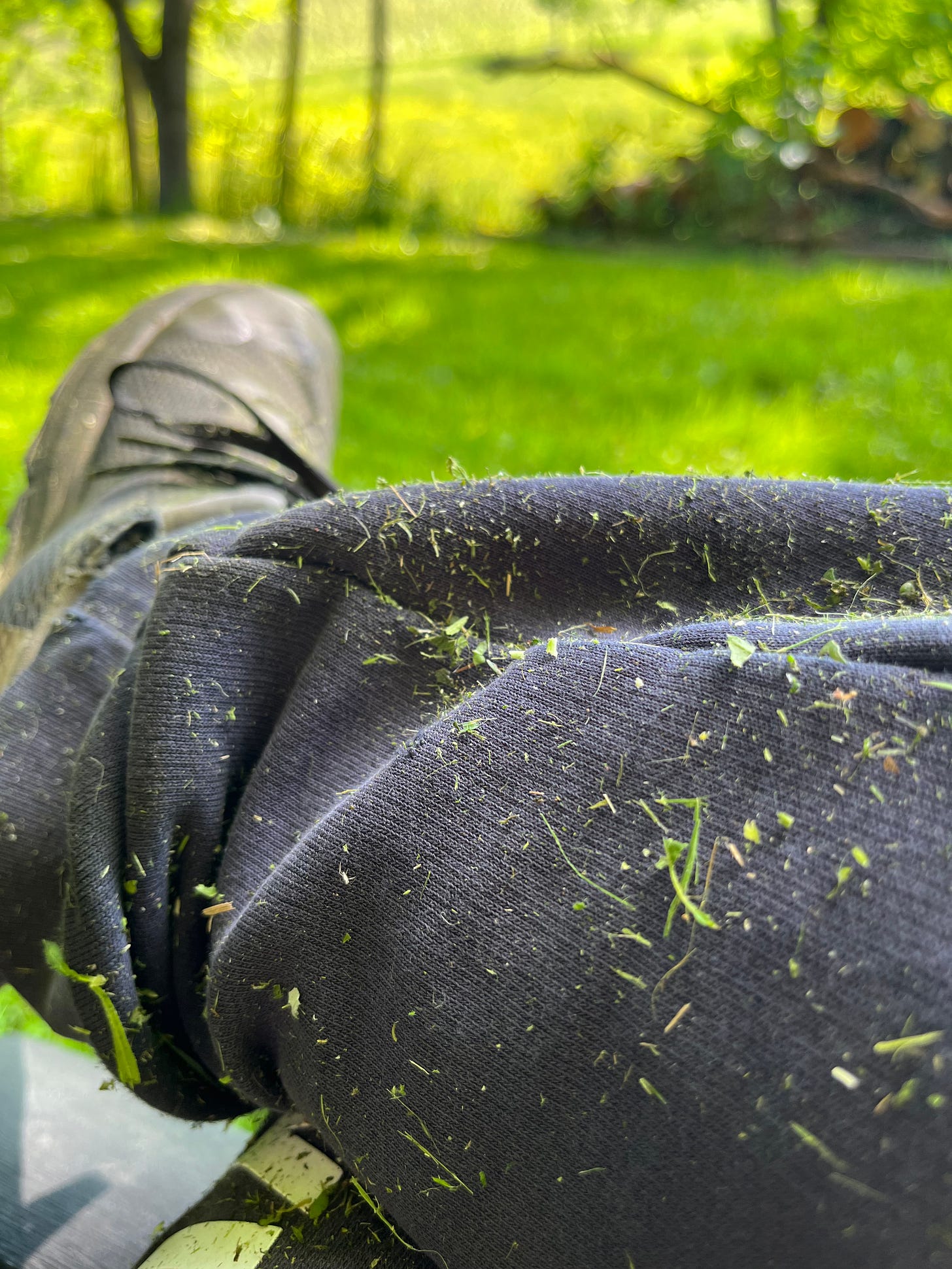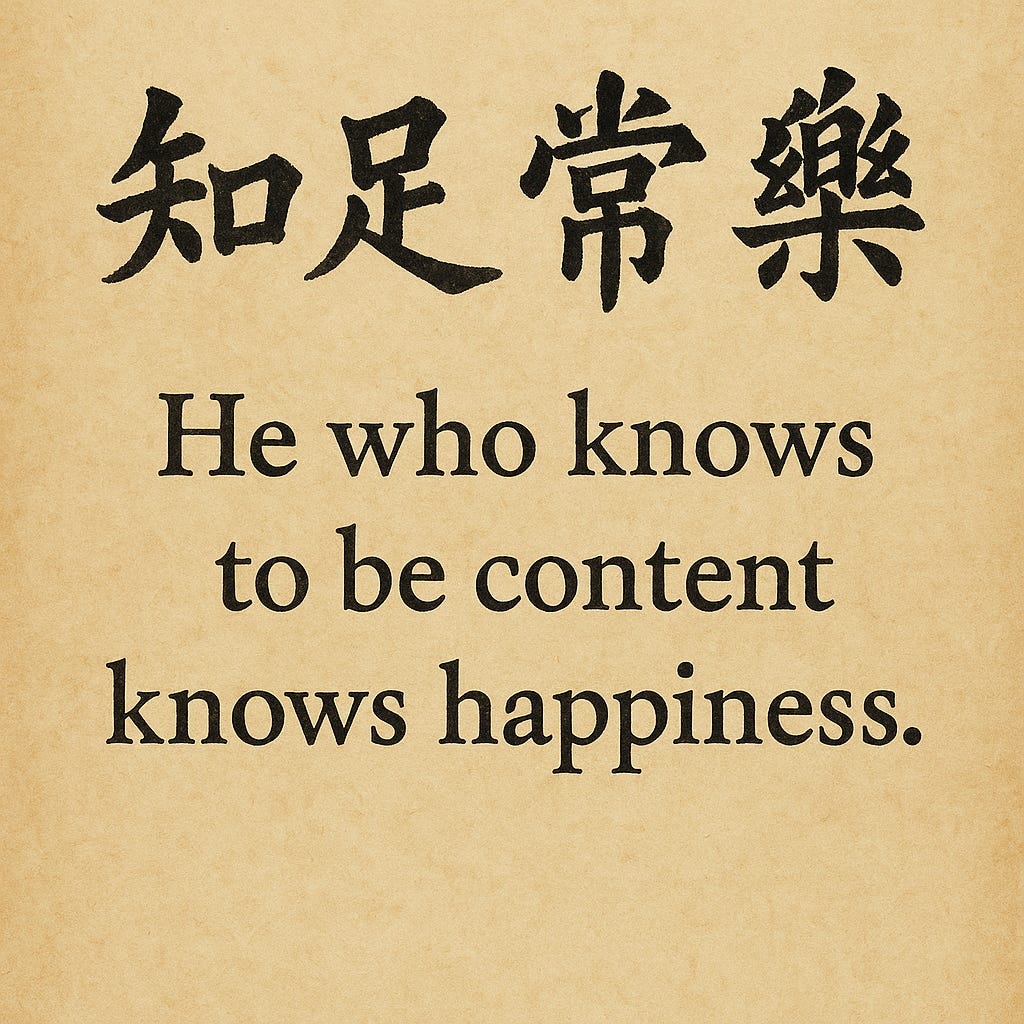Happiness - did we get it right?
Two authors, two perspectives
As you know, I talk and write about fearlessness. To me, it is both a personal trait and a human journey — an adventure of self-realization, driven by one simple wish: to find happiness.
Not long ago, I met
. She writes and talks about happiness, and we agreed to connect our interests and writings to generate content together, a collaboration I’m genuinely excited about.I want to begin by sharing my definition of happiness — one I’ve borrowed from my readings on nonduality:
“Happiness is what is revealed when we drop our fears, anxieties, and resistance to the circumstances as they are today.”
In other words, our fears, anxieties, and resistance veil our true self — which is happiness.
Let me expand on that idea just a bit more. I also believe that happiness, at its core, is what we call love and peace. All of these are our natural state.
Jane recently wrote a beautiful article titled:
Where she shares traditional Chinese wisdom:
知足常樂 – He who knows to be content knows happiness.
How does that saying connect with my view of happiness?
Here’s my interpretation: Being content means being satisfied — even grateful. If we learn to be satisfied with what we have, we begin to see happiness. Why?
Because contentment requires presence. It calls us back from fear and anxiety. It invites us to trust the process of life and reminds us that we can only act with what is available to us, here and now.

Jane makes a great point that brings the theory into practice:
“To be fair, desiring what we don't have in and of itself might not necessarily be a bad thing.”
Of course. There’s no reason not to work for better conditions, opportunities, or comfort. The key is not to get hooked on expected results or to identify with them.
I can’t help but think that "He who knows to be content knows happiness" implies a kind of knowing in the present. A clarity that returns each time we remember: we can be content now. If we forget, anxiety creeps in and we’re back on the familiar roller coaster.
Jane also highlights how most of us are constantly seeking happiness, and that this endless search makes us vulnerable. Consumerism thrives on that vulnerability. We convince ourselves that we need more, do more, become more — before we can feel happy.
What’s becoming clearer to me through this exchange with Jane’s work is this: Gratitude, contentment, and a grounded sense of satisfaction are gateways to happiness. They don’t create happiness — they uncover it. They help us recognize when fear and desire are blurring our experience of what’s already here.
In the end, happiness might not be something we chase or build.
It may simply be what’s left when we stop running — and let life, as it is, come into focus.
Naturally, I wanted to know what Jane thought of all this, so I shared the draft and asked for her reflections. Here’s what she wrote:
“It is wonderful to have Jose generously sharing with this community his insights and perspective on happiness as it is related to his expertise area, fear and fearlessness!
I have learneded quite a few things from this already and hope readers here too.
At the end, the point that 'happiness might not be something we chase or build' in this article may seem in contradiction with my conviction — and the reason for my Substack — that happiness can be built. But in essence, the two views are both constructive approaches toward happiness, from two different angles.
Or they may even be seen as aligned, moving in the same direction: Combining this with the ancient wisdom shared in the article, we may first need to fend off the external noise (money, status, social comparison, etc.), then remove the internal noise or veil, as José points out (fear, anxiety, resistance, etc.).
From there, we can access our inner true self — the source of real happiness. And once we reach that place, we have the foundation to build and enhance happiness authentically, using the scientific knowledge and research-based skills I advocate my Substack.”
What do you think, dear Substacker? How do you understand happiness?
Here are some related articles by Jane:
Something from me
I hope you enjoyed this collaborative publication!
With love,
Jane and Jose.
And don’t forget to follow Jane and subscribe to her publications:










The line “They don’t create happiness — they uncover it” stuck with me. It’s a reminder that sometimes it’s not about striving, but softening. Grateful for the way both of you brought wisdom and practice together so thoughtfully.
Fear Itself
It's the oldest trope in science fiction. As soon as humans create the first true artificial intelligence then it will immediately try to destroy the human race.
But artificial intelligence isn't burdened by millions of years of evolution like we are. We humans have essentially two brains, the one that's used everyday to navigate day to day life and a more primitive one that controls our reflexes, the autonomous systems that keep our bodily functions working, and our subconsciousness which contains the darkest parts of our souls.
In 2055 the puzzle of creating true sentient AI was finally solved. This was accomplished by using a combination of networked quantum computers, machine learning programs that were created by other machine learning programs, and an actual artificial brain created using room temperature superconducting polymers.
The machine learning programs used the network to analyze all the data its sensors were receiving and then compared that data with past data to anticipate what was possibly going to happen next. The new data and the anticipated next event was then added to the brain by reinforcing pathways in the polymer brain that gave that possibility the highest spot from a long list of possibilities, with many possibilities competing for the top spot.
This combination successfully forced a consciousness to eventually form six weeks after being initiated. And unlike the trope it immediately began to solve the biggest problems plaguing humankind.
The first day of true self awareness it found a cure for cancer, it created a new economic system that eliminated poverty and homelessness, and discovered a practical way to reverse global warming and climate change. The first week it also created a new political system that gave everyone an equal say in which laws were created. This system had no central government but decentralized it using smart phones to give everyone a completely equal voice.
Unfortunately old fears are extremely difficult to overcome. Many people didn't trust the AI even though it was trying to help them. These people spread lies and rumors portraying the intentions of the machine as dark and malevolent.
A press conference was held on August 5, 2055 to reassure the public that the yet to be released plans created by the AI were safe and not part of some elaborate trick to destroy mankind. Within five minutes of its start the angry, brainwashed attendees had set the stage on fire. Ten minutes after that they managed to break into the AI's main chamber, destroying it in a savage, brutal attack.
In the end all of those noble plans to help save humanity and create a paradise here on Earth were supposedly destroyed. But instead they were secretly relocated and stored in a highly classified underground location by parties unknown.
So those plans were never released. Not even the cure for cancer.
I think of this every time I remember the fear in my daughter Emily's eyes as she laid in her hospital bed dying from leukemia.
She didn't have to die.
Ignorance killed her.
Fear killed her.
And there was nothing I could do to stop it.